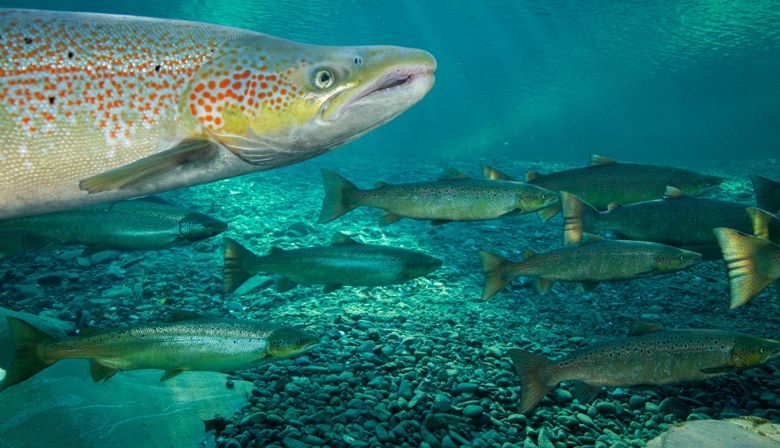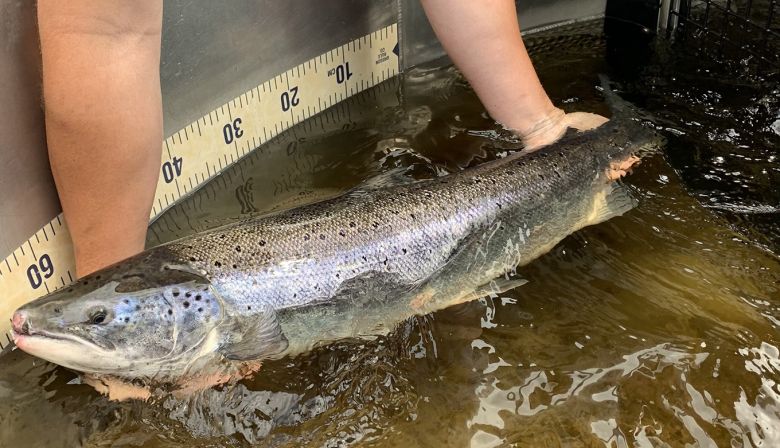
Subscribe & stay up-to-date with ASF


There is also talk about reinstalling the “Atlantic Bubble”, but the situation in Nova Scotia with higher infection rates is impacting any planning for that.
Airlines are still skittish and have delayed implementation of both route expansions and returns to previous service.
An interview in Politico has MP Wayne Easter describing pressure being brought to bear internally on developing plans for re-opening borders and reducing the barriers to both Canadians and to international travellers. The facts and regulations may not have changed, but the discussions are certainly moving forward.
In Canada the discussion on “Vaccination Passports” remains in its infancy. All in all, barriers remain for travel to Atlantic salmon rivers, but this could change in the next few months.
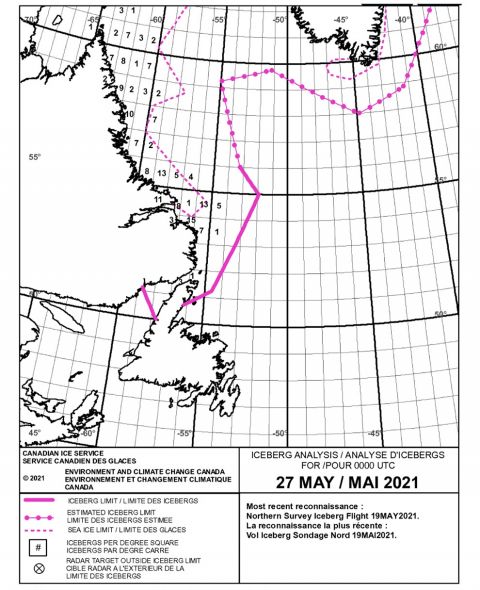
In the past generation there have been some years when the Strait of Belle Isle between Newfoundland and Labrador has been clogged with ice. It is thought that this reduced the survival of smolts headed for the Labrador Sea. There have been recent years when heavy sea ice has limited Atlantic salmon access to rivers on the northern coast of Newfoundland, such as the Gander and Exploits. The heavy ice appears to have had a serious impact on returns and spawning.
The lighter ice conditions this year may be due to global warming , and may or may not be affecting the mix of plankton at the base of the food chain in the Labrador Sea. Still, it could be beneficial for both Atlantic salmon survival and return numbers. One can but hope.

Jason Valliere, Maine DMR Biologist, says:
Salmon numbers have been picking up. We are off to a good start for 2021! Take a look at how this year compares to previous years in the report on the catch to date by year graph.
The photo shows the first repeat spawner of the year captured at Milford Fishlift. This guy was captured on 6/20/2019 and sent to Craig Brook Hatchery as a brood fish. He returned last Friday having grown 6.5” and having gained a few pounds in the past few years. He was released upstream to find his own mate this year…
We also caught a Shortnose Sturgeon. It’s not a surprise to catch one or two each year but usually they come upstream in late June or early July. This little one surprised us this morning.

Kennebec
Maranda Nemeth, ASF’s Director of the Maine Headwaters Project notes:
The first two-sea winter Atlantic salmon was captured at the Lockwood Dam last week. This was a female, 75 cm in length. She was trucked upstream and released into the Sandy River where the habitat is excellent for Atlantic salmon.
Meanwhile the outward smolt migration on the Kennebec is winding down. Maranda Nemeth notes:
Paul Christman from Maine DMR notes that the smolt assessment on the Sandy is likely the largest ever undertaken in the State’s history, already exceeding 1,500 smolts. The low water has been a small gift for the operation of the rotary traps, allowing the efficiency to reach 15 per cent, which will mean that the population estimate should yield very meaningful results on the habitat productivity since all these smolts are wild and naturally reared in the Sandy.
As of May 24, 1,738 smolt had been captured, and once recaptures were subtracted, there were 1,515 smolts. The Sandy River is indeed being very productive, and if issues of both downstream and upstream passage can be solved, the river could see greatly improved salmon runs in future.
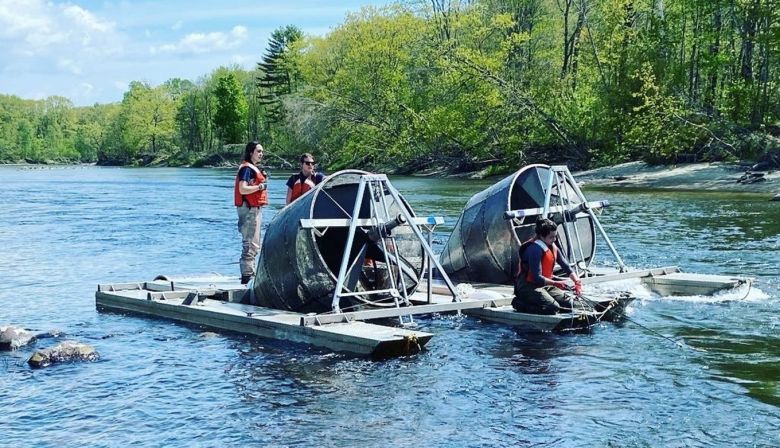
The Narraguagus smolt trap has had 530 smolts, after recapture numbers were subtracted. All of these were naturally reared.
In the East Machias 147 hatchery smolts and 11 wild reared smolts were captured.

Sheepscot River
Maranda Nemeth visited the Head Tide Dam this week, and noted the low water:
The Sheepscot River is incredibly low as are all the rivers in Maine. There is still good fish passage thanks to the modification work completed a few years ago. Paddling required a bit of portaging given the low water. I saw at least ten bald eagles in the area.
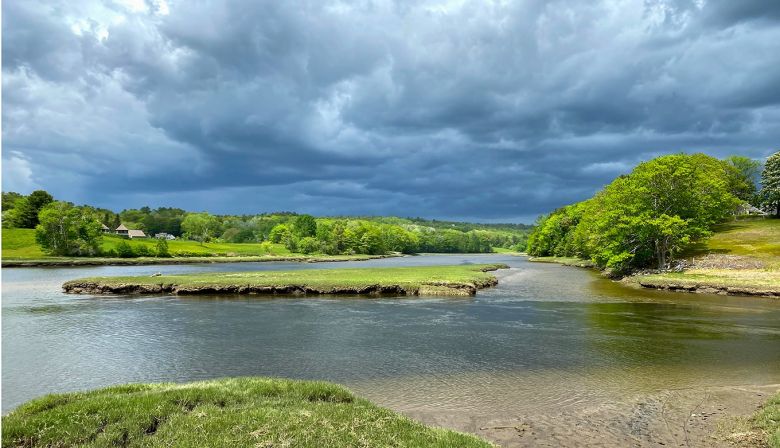
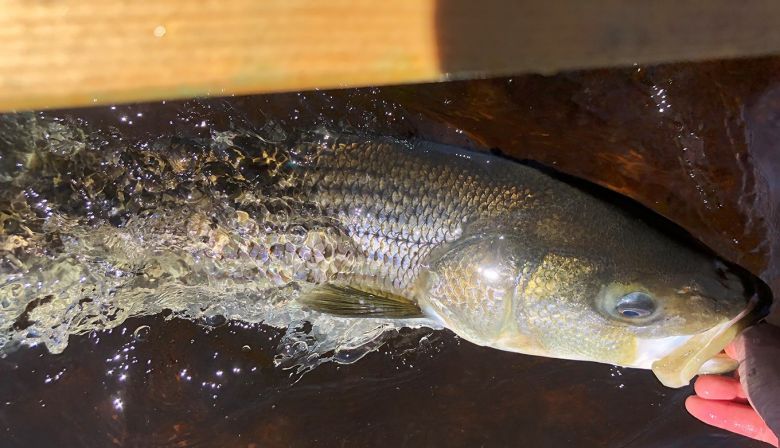
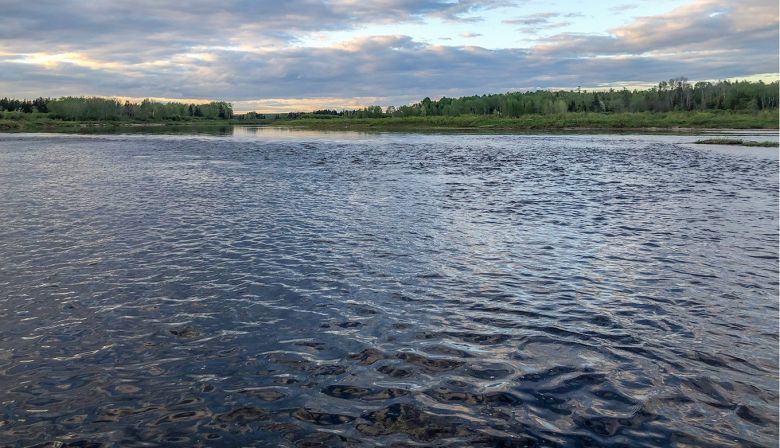
Much attention is on striped bass fishing and watching the spectacle of spawning on the Northwest Miramichi at the moment in New Brunswick.
DFO has closed the defined spawning ground to angling this week from Wednesday to Sunday:
http://www.glf.dfo-mpo.gc.ca/Gulf/FAM/Recreational-Fisheries/Striped-Bass-May-25-2021
New Brunswickers have enjoyed being out and about on the rivers, canoeing, picking fiddleheads, and there have been reports of large sea trout being caught, upwards of 20 inches. It’s a great time of year to be on the river. Throughout New Brunswick, rivers have come to life with migratory fish showing up like gaspereau, shad, sea trout, and the odd bright salmon on early rivers like the Restigouche.
There is some concern that with the low snowfall amounts last winter we may be in for challenging water conditions this season, with river levels already lower than average. Of course, it all depends on how much rain we get and so far this spring we’ve had a couple days of rain each week to give river levels a boost. Let’s hope that continues, giving bright salmon the water they need to make their way up rivers.
As early as May 2nd, there were reports of the first bright salmon being caught on the Restigouche and several exceptional specimens have been landed since then. It is impossible not to get excited at the sight of a May bright salmon. Are these fish the first sign of a strong run, or just on account of the early spring? We’ll soon find out.
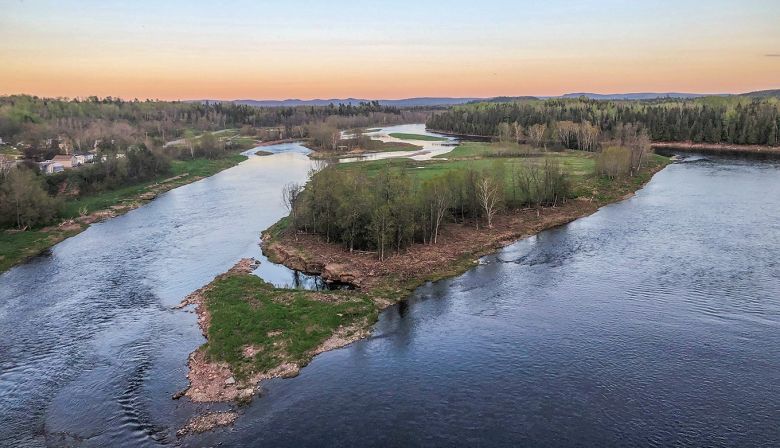
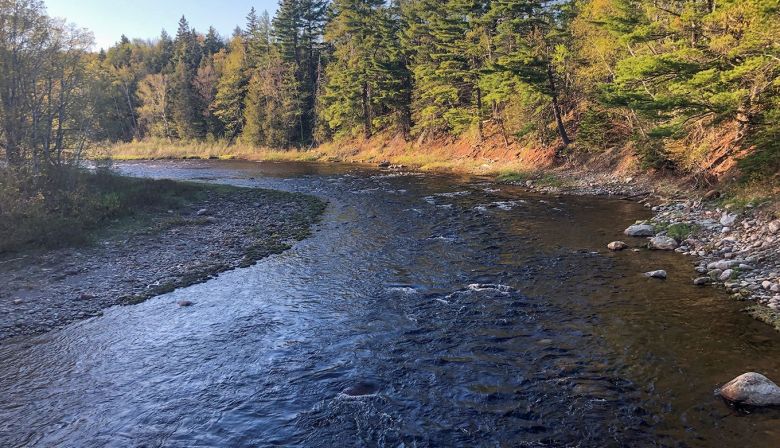
In addition, higher levels of Covid-19 have resulted in greater restrictions on outdoor activity, and especially the need to maintain personal distance.
Anglers should check the online Anglers’ Guide webpage for details on the Atlantic salmon regulations:
La saison de pêche sportive commencera sur de nombreuses rivières à compter du 1er juin avec des signes indiquant une montaison plustôt qu’a l’habitude. En espérant que dame nature saura bénir nos rivières avec un peu de pluie, cela devrait être un début intéressant pour une deuxième saison « Covid-19 » consécutive, mais avec une lueur d’espoir au bout du tunnel. Bonne pêche à tous!
Rivière Causapscal
Cumulativement au 25 mai, la capture de 8 saumons a été déclarée dont 3 relâchés. Reconnus comme l’une des rivières « hâtive » du Québec, certains pêcheurs ont parié sur le fait d’un printemps « hâtif » et pour certains, le pari a porté fruit. La saison 2021 a débuté officiellement le 15 mai sur la rivière Causapscal et les premiers pêcheurs étaient présents le 19.
Rivières de Gaspé
Avec un début de saison le 25 mai, des rapports circulent déjà que les captures ont commencés sur la York et Dartmouth.
Bonaventure
Les discussions entre les intervenants locaux sont dans une impasse concernant la conclusion d’un « accord de cohabitation » le gouvernement provincial et le ministre Dufour du MFFP devra tout probablement imposer une solution pour 2021 (voir river notes du 29 avril 2021).

Causapscal River
Angling officially began May 15th on the Causapscal River with the first anglers throwing a line on May 19th. As of May 25, 8 salmon have been landed including 3 released. Known as one of the “earliest” rivers in Quebec, people gambled on reserving time in response to the obvious signs from Mother Nature and for some, the gamble has paid off. Due to the pandemic, angling began on June 1 in 2020.
Gaspé Rivers
Reports of fish being landed on the York and Dartmouth have started to circulate.
Bonaventure
Discussions between local stakeholders are at an impasse in regard to concluding a “Cohabitation Agreement” and now the provincial government and MFFP Minister Dufour will have to impose a solution for 2021. (see April 30 river notes).
